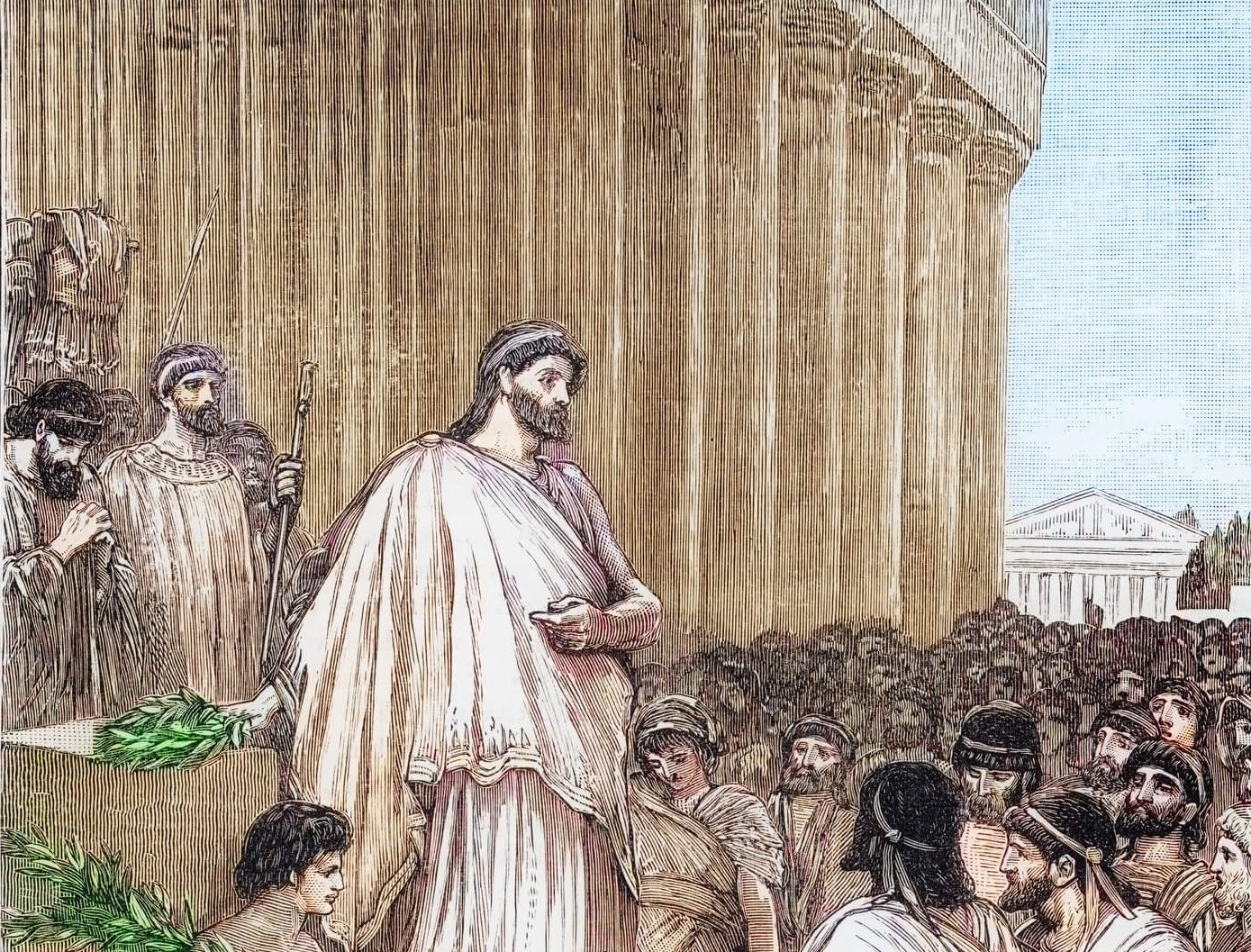Dunbar
By Edward St. Aubyn
(Hogarth, 2017)
Shakespeare’s King Lear is perhaps the most tragic of his plays. Set in a pagan and ancient Briton, it’s riddled with betrayal, madness, and murder. Its consideration of justice and temperance, wisdom and compassion, takes place against the darkest of backdrops.
It seems only appropriate, considering the play’s explication of familial discord and tyranny, that Edward St. Aubyn should write this adaptation for the Hogarth Shakespeare project, which includes novelistic adaptations by Margaret Atwood, Anne Tyler, Howard Jacobson, Jeanette Winterson, and Tracy Chevalier of other plays. St. Aubyn’s biography lends itself to the plot and drama of Lear: he’s spent more than twenty years writing about the anxieties of England’s upper classes, most famously in the Patrick Melrose novels, which fictionalize the sexual and drug abuse that defined St. Aubyn’s childhood and early manhood. What’s more, St. Aubyn studied Lear in depth as a young man. According to an interview with the New York Times, he can still quote portions of the play verbatim.
But translating Lear into the present day is a challenging task. In Jane Smiley’s Pulitzer Prize–winning adaptation A Thousand Acres, we saw the travails of King Lear through the eyes of his oldest daughter, Goneril. By locating her version on an Iowa farm, Smiley managed to keep much of the original plot alive, while adding greater depth and variance to its characters. Even though it’s set centuries later, Smiley’s story still revolves around the value of land. The farm functions as a kingdom in its own right, with the farmer as ruler of this kingdom.
But St. Aubyn wanted his story to feature someone universally famous, whose pomp and majesty parallel that of an ancient king. Thus, a mere farmer would not do. Neither, he believed, would a modern head of state, whose power and prestige is changeable and limited. He wanted someone “with the permafrost of power,” St. Aubyn told the Times. So he turned Lear into a media mogul: the king of money and information, a billionaire who controls boardrooms and newspapers across the world.
The decision to make Lear a lord of the presses and airwaves rather than of the soil invites reconsideration of the morality and politics of Shakespeare’s Lear. To what extent is the play rooted in aristocratic values and ideals? What does it lose when modified to fit a democratic, capitalistic society?
Shakespeare’s Lear takes place in England during the eighth century B.C. In Lear’s world, patriarchal authority and power were to be treated with reverence, and wisdom was to rule over the passions of pride and flesh. King Lear’s surrender of power to his unworthy daughters marks an unwise use of his authority, even (as his adviser Kent argues) an abdication of his responsibility as king. But at this point in the plot, Lear is focused more on his own honor and prestige than on the well-being of his kingdom. He puts his own passions first. That same desire for honor leads him to disinherit his youngest daughter, Cordelia, for telling him the truth. Lear’s vices stem primarily from pride-induced blindness. After his eldest daughters unceremoniously undermine and banish him, he undergoes a cathartic journey from darkness to light, callousness to compassion, and pride to humility.
The original Lear invokes a variety of Platonic themes. Like The Republic, Lear focuses on questions of justice: whether there is an objective justice, or whether we are instead subject to the whims of fate and the will of the stronger. Goneril and Regan are ruled by lustful, unrestrained appetites, as well as by disdain for their father and leader. In this respect, they embody the vices of Plato’s tyrant. In tyrannical regimes, notes Plato, “a father habituates himself to be like his child and fear his sons, and a son habituates himself to be like his father and to have no shame before or fear of his parents.” Goneril and Regan’s journey—from attempted parricide to their own self-destruction—follows their assertion of a conception of justice as the will of the stronger but also reveals that view’s collapse under the weight of their disordered passions.
Lear’s betrayal and death, however, don’t carry quite the same weight in a modern setting. For one thing, transformation into Harry Dunbar changes the nature of Lear’s vices. Dunbar the capitalist does not bear the same dignity as Lear the king. He—much like his two eldest daughters, here renamed Abigail and Megan—is ruled by his appetites, desirous of money and power. St. Aubyn writes that Dunbar’s two eldest daughters “had spared no effort to please him by imitating his ruthlessness and will to power.” Dunbar is himself a tyrant, a man no less cunning or manipulative than his daughters, a man who has actively ruined lives and tarnished reputations. In Shakespeare’s original, Lear was his daughters’ prey; here, he is their prototype. Dunbar does not love Florence, his youngest, for her own sake—his love is tainted by misplaced expectations and demands, as well as by the acquisitive nature of his personality.
Dunbar’s ruthlessness and greed lessen the villainy of his daughters, evil as they are. Because he’s no better, we aren’t struck with horror at their betrayal. It isn’t even clear that we should blame them. Our democratic society often suggests that familial allegiances are secondary to the important work of self-fulfillment. In order to preserve the original characters’ truly horrific villainy, St. Aubyn has to turn Abigail and Megan into sadistic monsters. Their love triangle with “Dr. Bob” (a stand-in for Shakespeare’s traitorous Edmund), cruel bullying, and penchant for violence careen into the extreme, adding salacious and gruesome detail to the book. But such detail does little to make the daughters into three-dimensional characters. Unlike in Smiley’s A Thousand Acres, we are not encouraged to have any compassion for these sisters.
Because of Dunbar’s tyrannical nature, the question arises of how such a character could command the loyal and virtuous love of both his youngest daughter and his adviser (here named Wilson). St. Aubyn strives to answer by showing the admiration and awe Wilson feels for his boss’s tireless drive, love of competition, and zest for work. But none of these is a true virtue. Florence’s steadfast love, meanwhile, is never tied to any pure action or kind word from her father, and is thus entirely unrequited and unearned. In a way, Florence is the mirror opposite of her sisters. While Abigail’s and Megan’s evil is over the top, Florence is just a bit too perfect.
Nevertheless, Dunbar’s progression from vice to virtue through the crucible of pain is vivid and poignant—perhaps precisely because he is not descending from such a lofty aristocratic height. His lonely journey through the snowy wasteland of northern England, accompanied only by his anxieties and vacillating thoughts, features the book’s best writing. St. Aubyn describes Dunbar as “reaching for the keys of a piano that was sliding across the floor of a sinking ship, trying to remember snatches of a piece he had once known by heart.” Punctuated with pleas against a fearful, impending madness—“Please don’t let me go mad,” Dunbar mutters, in consonance with Lear—our protagonist confronts nature, awed and terrified by its majesty. He sees “a vertigo of detail, a microscopic world that he didn’t need a microscope to imagine, where every patch of lichen was a strangely colored forest of spores, their trunks rearing from the stony planet on which they lived.” A small lake, hedged in by snow and ice, appears to Dunbar “too beautiful, as if it had been choreographed for an exquisite death. . . . There was nowhere, however lovely, that he couldn’t contaminate with his morbid thoughts and perpetual fear.”
Yet Dunbar’s journey through nature and madness is more solitary and individualistic than Lear’s. He reaches awakening via his own slow pilgrimage through nature, apart from the ongoing influence of fool or madman (though both make brief appearances in the novel). Unlike Shakespeare’s Lear, Dunbar does not take the counsel of compatriots. He advances himself into the unknown with doggedness and determination, until he at last begins to emerge from the maze of his own madness. Here he slowly experiences a rebirth and “blessedness” that promise hope in the face of tragedy.
Perhaps, to some extent, this mirrors St. Aubyn’s own journey out of addiction and suicidal thoughts. He has described in interviews a determination that brought him through the worst of his depression, a dogged belief that he must write or die. We see this relentless forward motion in Dunbar’s voyage, a similar resolve never to stop advancing.
Nonetheless, Lear’s journey loses some of its potency when it is divorced from the companionship of fellow sufferers. We miss the fool for large portions of Dunbar’s journey, along with Edgar, Kent, and Gloucester. In Shakespeare’s play, these characters accompany Lear through his fateful exile. Each plays a role in pulling Lear out of his madness, bringing him to the solace and peace of Cordelia’s forgiveness. Each offers respite to the care-fraught king. Here Dunbar—like a good capitalist, perhaps—must make his journey alone.
Although St. Aubyn chisels the play down to its basic parts, cutting or condensing characters, he spends a good portion of the story delving into Dunbar’s childhood, offering an almost clinical diagnosis for his selfishness and power lust, along with that of his daughters. Americans today don’t like mysterious vice; we want things explained to us, want to see the circumstantial reasons behind flawed or evil characters. Every petty or vicious act must be explained, every grievance or grudge extrapolated from some childhood hurt or horror. Perhaps St. Aubyn is better suited than most to imagine and explain such motivations.
But therapeutic explanation dulls Shakespeare’s horror and tragedy. In both Lear’s and Shakespeare’s respective eras, there was no explanation for betrayal or parricide—no circumstantial burden or trauma that could explain away evil and injustice. Just as Dante placed Judas in the deepest circle of hell in his Inferno, so Shakespeare’s compatriots would look upon Goneril’s and Regan’s actions with abject horror. In Dunbar, by contrast, we have betrayal without allegiance, ingratitude in a culture of discontent. Renouncing filial obedience does not make Abigail and Megan exceptional in their generation. The constraints of Shakespeare’s time don’t carry the same weight in our society, so it’s hard to be shocked by their transgression.
Not every Shakespeare adaptation loses its resonance in interpretation. Akira Kurosawa’s film Ran, which sets Lear in Japan’s warlord era, more ably accomplishes what St. Aubyn attempts. Some of Shakespeare’s comedies, like The Taming of the Shrew, have been transformed into various cinematic and literary guises—like The Quiet Man or the rom-com 10 Things I Hate About You—and while we surely miss some of Shakespeare’s larger themes, the play’s central focus on humor and transformation remain, while many of the characters’ virtues and vices survive translation. Romeo and Juliet has been transformed into numerous films, books, and even a musical. No adaptation is quite worthy of the original, but some have become classics in their own right.
Sometimes, too, a Shakespearean adaptation’s success might depend on how literal it endeavors to be. Herman Melville and Aldous Huxley drew plot and character inspiration from Shakespeare, even though their works did not exactly follow his plotlines. St. Aubyn noted that King Lear inspired and informed his Patrick Melrose novels. Some of Shakespeare’s plays will be more difficult to translate to modern times and circumstances, but the insight afforded by them can still foster masterpieces.
Perhaps our greedy and individualistic age is a time in which we are not suited to comprehend the tragedy of Shakespeare’s original Lear. We’ve forgotten what it means to owe deference to our superiors; we no longer feel the gravitas of ancient customs. In our democratic age, the passions reign supreme. We’ve all become Gonerils and Regans to some extent.
Dunbar seeks a middle ground between Shakespeare’s telling and a modern audience, changing the scenery but keeping the characters. Yet turning Lear into a modern capitalist does more than change his clothing and context: it necessarily requires a shift in his character. St. Aubyn suits Lear to our vices and makes him relatable, perhaps, but also shears him of honor, and thus divorces us from the real terror at the heart of Shakespeare’s play—a terror we should strive to understand before tyranny encompasses us all.
Gracy Olmstead writes from the Washington, D.C., area. Her work has appeared in the American Conservative, The Week, National Review, The Federalist, and other publications.














